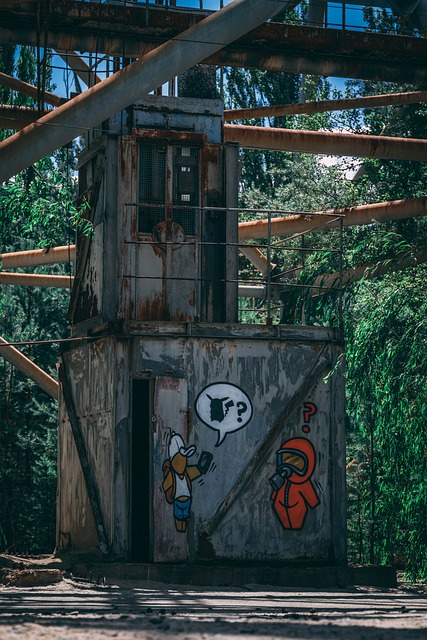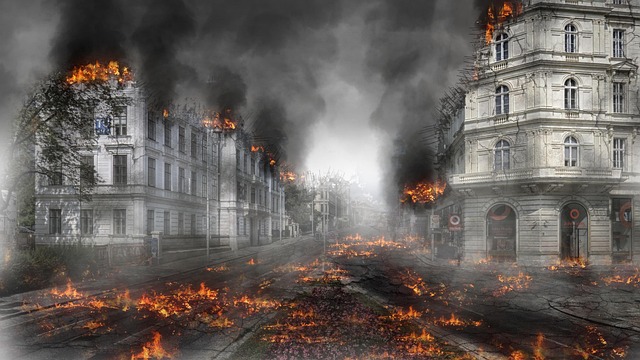San Antonio's winters pose risks to HVAC systems due to freezing temperatures. To prevent burst pipes, replace old systems with durable models, insulate pipes, and ensure proper drainage. Post-disaster replacements should include geothermal heat pumps for energy efficiency, and regular maintenance checks are vital for reliable performance during cold weather.
In San Antonio, where winters can be harsh, preventing burst pipes during winter is paramount. This article explores the crucial task of disaster reconstruction and HVAC system replacement, focusing on strategies to mitigate pipe damage. We delve into understanding the unique challenges posed by cold weather, offering key steps for efficient system replacements. Additionally, we highlight the importance of choosing resilient heating solutions tailored for San Antonio’s climate to safeguard your home or business from potential disasters.
- Understanding Winter's Impact on Pipes in San Antonio
- Key Steps for Efficient HVAC System Replacement
- Choosing Resilient Heating Solutions for Cold Weather
Understanding Winter's Impact on Pipes in San Antonio

San Antonio’s winters can be unpredictable, with sudden drops in temperature posing a significant risk to outdated HVAC systems and their pipes. As temperatures fall below freezing, the water within these systems is at risk of expanding and bursting, causing costly damage and disruptions. This phenomenon, known as pipe bursts, is a common winter-related issue that can leave homes or commercial buildings without heating during already chilly San Antonio days.
To prevent burst pipes during winter in San Antonio, it’s crucial to understand the impact of freezing temperatures on these systems. Homeowners and building managers should consider replacing outdated HVAC systems with more efficient and durable models designed to handle extreme conditions. Regular maintenance checks before winter sets in are essential, including insulating pipes exposed to external elements and ensuring proper drainage to reduce water pressure. By taking proactive measures, San Antonio residents can safeguard their properties from potential pipe bursts and keep their comfort levels high throughout the cold season.
Key Steps for Efficient HVAC System Replacement

When replacing an HVAC system after a disaster, it’s crucial to take proactive measures to prevent potential issues, especially in colder regions like San Antonio during winter. One of the primary concerns is avoiding burst pipes, which can lead to significant damage and costly repairs. Before initiating the replacement process, inspect for any signs of pipe corrosion or damage caused by the disaster. If vulnerabilities are identified, address them promptly using insulation and sealing techniques to safeguard against extreme temperatures.
During installation, ensure that new pipes are properly insulated and routed away from areas prone to freezing. Utilize industry-approved materials and follow best practices recommended by HVAC professionals. Regular maintenance checks post-replacement are also vital. Monitoring the system’s performance and addressing any unusual issues promptly can help prevent winter disruptions, ensuring a seamless transition to an efficient, reliable HVAC system in San Antonio.
Choosing Resilient Heating Solutions for Cold Weather

When reconstructing HVAC systems after a disaster, particularly in regions with cold climates like San Antonio, selecting resilient heating solutions is paramount to prevent wintertime issues such as burst pipes. Traditional HVAC systems may struggle against freezing temperatures, leading to costly repairs and discomfort. Therefore, homeowners and builders should opt for heating equipment designed for durability and efficiency in cold weather conditions.
Geothermal heat pumps, for instance, offer a sustainable and energy-efficient alternative. By harnessing the Earth’s constant temperature, these systems can provide consistent warmth during winter while avoiding the risks associated with direct exposure to freezing air. Furthermore, proper insulation and sealing of ducts are essential to maintain optimal indoor temperatures and prevent heat loss, thereby enhancing energy conservation and reducing the strain on heating mechanisms.
In San Antonio, understanding the impact of winter on pipes is key to preventing burst pipes. By taking efficient steps for HVAC system replacement and choosing resilient heating solutions, homeowners can ensure comfort and avoid costly repairs during cold weather. Remember, a well-planned approach with the right heating systems can make all the difference in navigating San Antonio’s winters.
